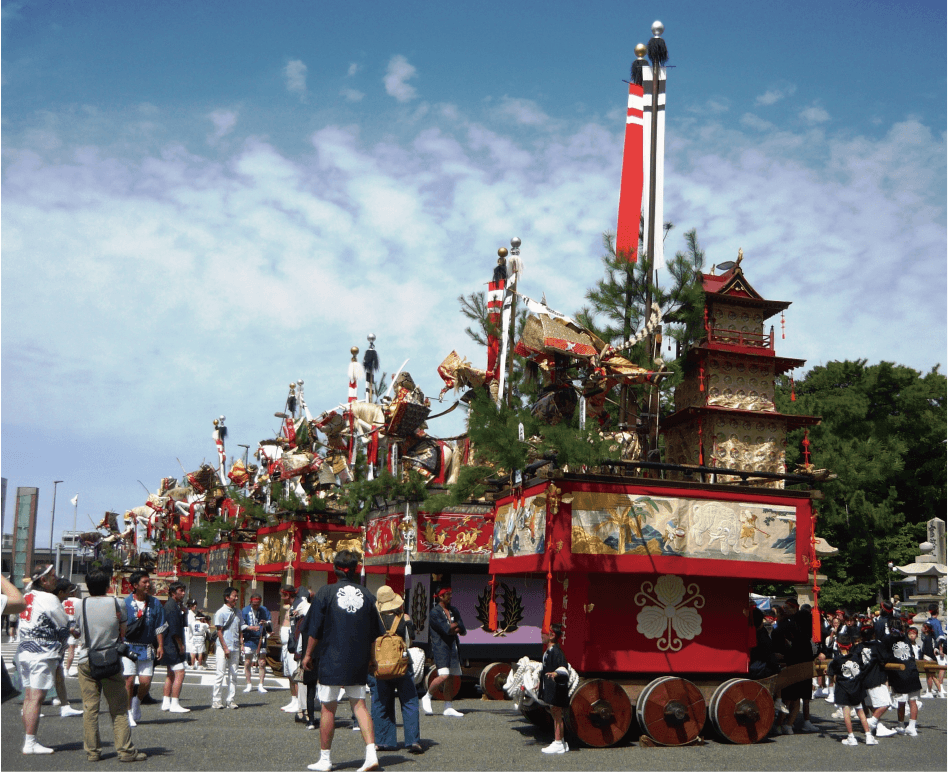
The Yama float festivals that are carried out throughout Japan are said to originate in Kyoto’s Gion Goryo-e (a Shinto purification ritual that marked the beginning of the Gion Matsuri).
In the past, epidemics and diseases were thought to be caused by curses from the spirits of the deceased (vengeful “onryo” spirits who died holding grudges and “ekijin,” gods of pestilence). The Yama float festivals are said to have started with the custom of attaching goryo spirits to long spears, tall trees, and decorative items in the shape of mountains and casting them into the river or ocean, or destroying them, to drive the vengeful or plague spirits out of town. Over time, this practice gradually became larger and more extravagant, and came to be used throughout Japan. The designs and decorations of the floats also came to resemble each region, and had various names like “Dashi” and “Danjiri.”
The origin of Tsuruga Yama floats is not clearly understood, but they are thought to have existed around the 16th century (in the latter half of the Muromachi period). Taking inspiration from Kyoto’s festivals, they share common elements, such as standing pine trees as an object of worship for the gods, and decorative elements in the shape of mountains. These shared features can even be seen in the appearance of the Yama floats.
These days, the Kehi Jingu shrine festival (Tsuruga festival) held in September is the most popular attraction, and as a festival highlight, brings much excitement to the town.
